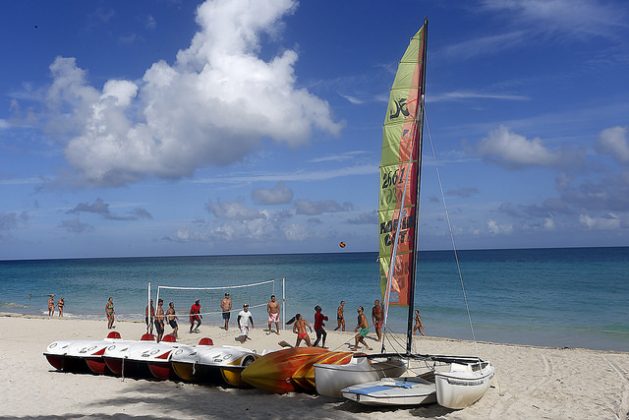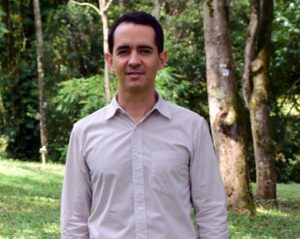Possibilities for the Cuban Economy in 2020
By Pavel Vidal* (IPS)

HAVANA TIMES – Sanctions against the Cuban economy from the Trump administration have intensified in recent weeks. These measures have added tension to a balance of payment and public spending that was already in a bad place as a result of declining exchange with Venezuela ever since 2015.
Alternatives to try and lessen this blow are becoming few and far between. Fiscal expansion funded by government bonds, has reached its limit. In fact, pay rises decreed in the public sector this year have increased inflation risks. The fuel crisis has forced them to stop some investments and industrial activity in the second semester.
Consumer spending has suffered greatly over the year as a result of repetitive shortages. All of these factors should place the economy close to a recession in 2019. Nevertheless, we have to wait for Cuba’s Office of Statistics and Information to publish data at the end of the year, which have surprised us more than once with figures that are hard to get our heads around.
The Cuban government’s international diplomatic efforts are key right now, at a time when Washington is trying to isolate Havana. However, it’s not expected that this will result in a significant rebuilding of a trading portfolio with the countries it is trying to target with diplomatic ties.
The problem lies in the fact that the Cuban economy has spent the last two decades focusing on a model of exporting services, especially medical services, and tourism, to try and insert the national economy within the global market.

As a result, even when Mexico, Russia or other countries wanted to sell oil to Cuba and strengthen their trading relationships, Cuba doesn’t have any way of paying them back, by selling them something and competing in other sectors that are different to these services.
This growth model based on exporting professional services has been in trouble due to the international climate surrounding the Venezuelan crisis and the US tightening its sanctions. Changes in the continent’s political cycle have meant that Cuban medical missions have been withdrawn from Brazil, Ecuador and Bolivia.
Five years have already passed without any real increase in total exports of goods and services (2014: -2.8%; 2015: -0.1%; 2016: -19.7%; 2017: 0,0% and 2018: -2.4%). Cuba will continue to depend upon Venezuelan oil and looking for every possible way to sidestep US sanctions, because they are paying the oil with medical services.
In order for Cuba to be able to redirect its oil imports in the short-term, it needs to draw up an agreement with other countries in which Cuban medical services are hired, which they haven’t managed to do up until now and their chances don’t look all too promising either.
Options: tourism, better treatment for foreign investors and structural currency reform
Promoting foreign investment is still important, but increased risks exist after the waiver on Title III of the Helms-Burton Act was lifted must be overcome. In any case, an investor’s basic calculation will always be whether the risk is worth future profits.
If financial risk increases as a result of the embargo, the Cuban government will have to get to work and reduce other risks so as to ensure there are returns on foreign capital investments on the island. This includes transforming state employment agencies [that investors must use to hire personnel], and looking for currency arrangements with investors to minimize any uncertainty tied to the local currencies, etc.
The Cuban government’s wager on tourism today seems to make perfect sense. It seems to be the only clear option for them to increase revenue in the short-term. In spite of tourism having two bad years on the island, historic records prove that it has the ability to jump back.
Competitive advantages that have maintained the growing tendency for demand in the Cuban market continue to be present and could increase with new investments planned to build hotels and infrastructure, with greater collaborative efforts with the private sector.
Alongside tourism, another alternative for economic growth seems to lie in the reorganization of national industry and a more efficient placement of human capital. This won’t translate into greater exports in the short-term, but it will allow for imports to gradually be replaced and in an increase in productivity.
The government has to stop accommodating the state-led business sector which it continues to subsidize, which only survives thanks to the official overvalued exchange rate (both for the Cuban peso and Convertible peso, CUC), which continues to employ a significant part of the workforce, unproductively.
Workers are a scarce resource in the Cuban market because of emigration and the aging of the national population. Having workers employed in state-led industry without any economic results just adds to the obvious inefficiency of the production system, it reduces the average productivity of the economy and explains, to a great extent, low wages in the public sector.
Keeping these unproductive state industries afloat continues to fit in with the socialist system that is entrenched in official ideology, but the reality is that it just undermines their political power by weakening the economy.
Miguel Diaz-Canel’s government could gain momentum with a strategy of closing down inefficient state companies, pay hikes in productive state companies, expanding the private sector, and greater taxes from a more dynamic state and private sector.
Within this landscape, greater non-inflationary spending would be possible in health, education and the rest of the state sector. However, this restructuring isn’t possible until they fix official exchange rates. They can’t tell which state companies are really profitable and worth fighting for and which ones are losing money and need to be closed.
Financial statements in the state sector have been distorted for thirty years as a result of the overvalued exchange rate of the Cuban peso, and of the CUC in recent years too. Currency reform, especially unification and fixing official exchange rates for the Cuban peso and CUC, continue to be the mother of all measures that Cuban industry needs to bring about growth from becoming more productive.
In recent weeks, the Central Bank issued a statement explaining that some state-run retail markets operating in convertible pesos will begin to offer change only in regular Cuban pesos, on a trial basis.
Along with the previous decision of re-dollarizing other markets, these dispositions prove that the government’s final objective is to kick the convertible peso out of circulation. Nevertheless, the CUC’s departure from the economy will imply an adjustment of exchange rates, and that includes the state companies.
State retail markets operating with pesos isn’t enough, there has to be a huge exchange adjustment. On the black market, the CUC has already dropped in value by 15% against the USD, which gives us an idea of just how great the exchange adjustment needs to be for the CUC, and also the official exchange rate for the regular Cuban peso.
In other words, we will see important steps in structural currency reform when the Central Bank begins to adjust the exchange rates.
*Pavel Vidal is a Cuban economist and professor at the Universidad Javeriana in Cali, Colombia.

Not an economist by any means but have some common sense. The statist economy has caused great harm to Cuba. MY family was involved in the dairy industry and pharmaceuticals. Dairy and meat production have plummeted as has the cattle population compared to that of prior to the Revolution there are fewer cows in Cuba than there were in the 40s and 50s in spite of Castro’s fascination with cows and milk. The government imported thousands of dairy cows from Canada and after a good start that project as well as the industry in general have been mismanaged.
The economy must be reformed and the US embargo must be lifted or at least stop the application of Helms- Burton II. The embargo is a cold war anachronism and so is the statist economy . Time for a change on both sides of the Florida straits.
That’s a generational change, fortunately young Cubans in the growing services sector are being trained in customer satisfaction,at least in Havana in the better Cuban and tourist venues.
Remember when the 2 Germany’s united, the east Germans couldn’t adjust to the hardworking efficient work ethic/style of W.Germans.
These economic reforms are reminiscent of the adage: rearranging the deck chairs on the Titanic. Until changes are made which incentivize personal initiative, productivity will falter. Without an increase in productivity, the Cuban economy will remain crippled.
The noted “pay rises” apparently helping to lead to inflation is interesting – up to a minimum 400 pesos ($16 US) per month. No doubt the Cuban economists are thankful it wasn’t 450 pesos.